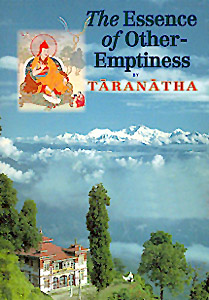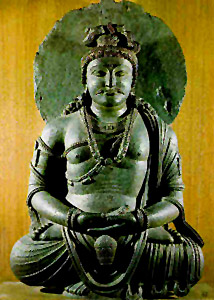 Pushyamitra Shunga was the first king of Magadha who established a powerful Brahman kingdom in ancient India. Pushyamitra performed the Ashwamedha Yajna in order to celebrate the triumph of Brahmanical revival in ancient India. According to the historians, Pushyamitra Shunga was the head of that Brahmanical party, which was tired of the Maurya patronage of the Buddhists. Hence according to the theories approached by the scholars, Pushyamitra was not benign to the Buddhists.
Pushyamitra Shunga was the first king of Magadha who established a powerful Brahman kingdom in ancient India. Pushyamitra performed the Ashwamedha Yajna in order to celebrate the triumph of Brahmanical revival in ancient India. According to the historians, Pushyamitra Shunga was the head of that Brahmanical party, which was tired of the Maurya patronage of the Buddhists. Hence according to the theories approached by the scholars, Pushyamitra was not benign to the Buddhists.
There are several conflicting theories regarding the nature of Pushyamitra`s relationship with the Buddhists. The Buddhist texts of Taranatha and Divyadana depicted Pushyamitra as the revengeful persecutor of Buddhism. According to these texts, Pushyamitra is said to have made an attempt though unsuccessful to destroy the great monastery at Kukkutarama. He is said to have demolished many other Buddhist monasteries and the stupas and chased the Buddhist Shramans from Pataliputra to Sakala in Punjab and announced a reward of one hundred dinars on the head of each monk. Hence as the historical records suggest, Pushyamitra Shunga was a staunch Hindu Brahman and he did not indulge in the promotion of the Buddhism as a state religion like the Mauryas. Rather Pushyamitra Shunga is well known in the history of ancient India as the persecutor of the Buddhists.
The theory as forwarded by the Buddhist text was not completely supported by the modern scholars later. Smith has opined that the story of the persecution of the Buddhist by Pushyamitra is an exaggerated detail though it has a basis of truth. Prof. N.N. Ghosh is in the opinion that Pushyamitra Shunga could not hold in check the overwhelming tide of the Brahmanical reaction during his reign. Moreover Ghosh differs with Smith regarding the story of Pushyamitra`s persecution of the Buddhist and holds that the story of persecution has a kernel of truth. But many other scholars have countered the testimony of the Buddhist writers about Pushyamitra`s persecution of the Buddhist on several grounds. According to the modern scholars, religious persecution in the ancient India was an exception and toleration was the general rule of the day. Moreover according to the modern scholars, the Buddhist writers were too sectarian in their views and provided distorted facts about Pushyamitra due to their jealousy to Pushyamitra`s patronage of Brahmanism. Furthermore the modern scholars have also put that till the Mauryas, the Buddhism was the supreme state religion. In such a circumstances, they could not reconcile themselves with the lately emerging Brahmanical regime and hence inculcated hostility towards it. There are also evidences that the Buddhist people openly allied with the Yavanas in order to materialize their hostility towards Pushyamitra. Consequently there was some persecution of Buddhists in the political grounds. Hence Pushyamitra cannot be held responsible solely for the persecution of the Buddhist. Finally as the historical references suggest, Pushyamitra spared the Buddhist stupas of Sanchi and Bharhut from destruction. Moreover Pushyamitra contributed for the reinstallation of the Sanchi and the Bharhut stupas, the architectural idiom of the Mauryan art. The beautifully sculptured gateway of the Bharhut Stupa was made under the patronage of Pushyamitra Shunga. Hence depending on these facts, Pushyamitra cannot be recognized as an oppressor of the Buddhists.
But many other scholars have countered the testimony of the Buddhist writers about Pushyamitra`s persecution of the Buddhist on several grounds. According to the modern scholars, religious persecution in the ancient India was an exception and toleration was the general rule of the day. Moreover according to the modern scholars, the Buddhist writers were too sectarian in their views and provided distorted facts about Pushyamitra due to their jealousy to Pushyamitra`s patronage of Brahmanism. Furthermore the modern scholars have also put that till the Mauryas, the Buddhism was the supreme state religion. In such a circumstances, they could not reconcile themselves with the lately emerging Brahmanical regime and hence inculcated hostility towards it. There are also evidences that the Buddhist people openly allied with the Yavanas in order to materialize their hostility towards Pushyamitra. Consequently there was some persecution of Buddhists in the political grounds. Hence Pushyamitra cannot be held responsible solely for the persecution of the Buddhist. Finally as the historical references suggest, Pushyamitra spared the Buddhist stupas of Sanchi and Bharhut from destruction. Moreover Pushyamitra contributed for the reinstallation of the Sanchi and the Bharhut stupas, the architectural idiom of the Mauryan art. The beautifully sculptured gateway of the Bharhut Stupa was made under the patronage of Pushyamitra Shunga. Hence depending on these facts, Pushyamitra cannot be recognized as an oppressor of the Buddhists.
The historians in the modern days have unanimously opined that Pushyamitra`s persecution against the Buddhist was solely a political measure against the disloyal monks who were out to raise a revolt against Pushyamitra Shunga. The seditious monks might have used the frontier monastery of Sakala in Punjab and allied with the Yavanas to conspire against the Shungas. Pushyamitra had no other way but to destroy the monastery in order to subdue the rebellion. Henceforth Pushyamitra`s persecution of the Buddhist was entirely a political one and was not the outcome of the Brahmanical reaction that marked his reign.



















